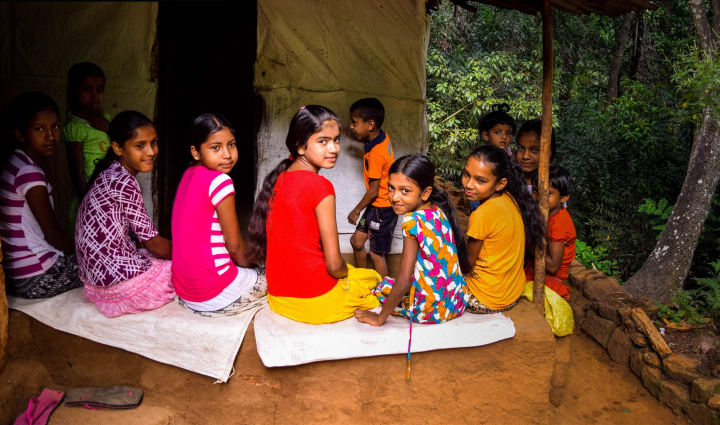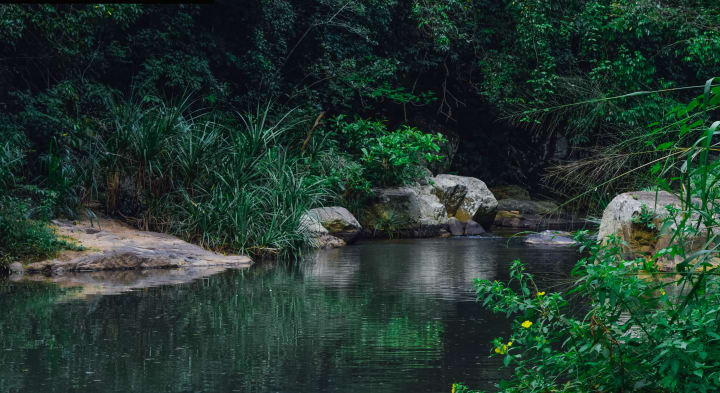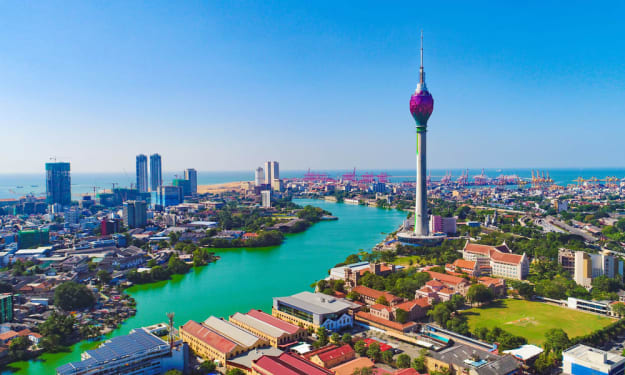
In the Badulla District, Kohonawala hamlet is situated just past the Passara Madulsima mountain range. With its breathtaking views, Kohonawala resembles a fairy tale village. It only receives sunlight for six hours (per day), from 9.00 am to 3.00 pm. The hamlet receives just six hours of sunshine due to the ring of mountains that surround it. As a result, Kohonawala is regarded as a unique settlement by visitors.
Kohonawala can only be reached by foot. It takes at least six hours to walk the 12-kilometer route one way, making it a taxing excursion. Therefore, because the full trip takes a day, it is preferable to start early. However, the breathtaking views along the hamlet's road are worthwhile. The people who live in the village have lovely, independent lives. Semi-farming and crop cultivation provides a living for all 45 households in the community.
Unending views of the Loggal Oya (stream) and rice fields tended by locals may be viewed along the route to the hamlet as it passes past tea gardens. There is a short, zigzag trail with several difficult climbs that locals refer to as "padi deseeya" (sinhala for "two hundred stairs"). Following it, the trail passes through a mana patch with breathtaking 180-degree vistas. The rocks are slick in certain spots. But every week at least, peasants as elderly as 90 or older trek to Madolsima to sell their harvests by walking the hard trip. Farmers make up Kohonawala's population. They live in harmony. These villagers occasionally have to take a bus to Passara to purchase various necessities after selling their harvests at Madolsima, which is located around 20 kilometers from Kohonawala. They had been doing this every day since they were young.
These people's primary sources of income include the production of rice, pepper, vegetables, and fruits. Because they have so few basic needs and wants, and because items like coconuts, fish, Maldivian fish, and newspapers are few, they are self-sufficient in many ways. Since the Kohonawala School only offers lessons up to grade 5, students must transfer to Kahataruppa or Madulsima Schools in order to continue their education. This requires an 18 km roundtrip journey every day. Because of this, the majority of kids drop out of school around age 10 and continue to assist their parents.

When you first witness the splendor of the hamlet in the early morning, it is very amazing; in every direction, all you can see are the mountains and the clear sky. Although some claim that the light rises in this hamlet at 9 AM and that the community is then completely enveloped in darkness, the fact is that residents may see the sunrise around 9 AM from mountaintops.
History of the Village
The people assert that King Walagamba is responsible for the history of Koholana, which is reflected in various stories. Following the end of the conflict, Konara, a king's minister, settled in this community; his descendants are known as the Ranpath Mudiyanselage. This village's history is really fascinating. The warriors that assisted in the combat during the revolt in 1818, the Ranpathmudiyanse, are therefore buried in this hamlet. Two villagers fled the Uva Wellassa revolt in 1818 to avoid the Englishmen; after some time, this man and his wife gave birth to children, and they became a family. There are many people in the village, but the one who is more believable is the one who has similar characteristics to everyone else and is similar to them in many other ways.

The way to reach the village
There are two ways to get to this stunningly remote community. One of them hails from Kahataruppa, which is approximately 15.5 kilometers from Badulla Town, and the other from Madulsima, which is about 41 kilometers distant. The first path, the Kahataruppa route, is preferable since it is relatively simpler to travel on, particularly when the Loggal Oya is calm and peaceful. You must traverse the canals, which is quite challenging during the wet season, to get to Loggal Oya because there is no bridge connecting it to the hamlet. The alternative is an extremely difficult, perilous belly-string road with hairpin curves lined by Mana plants and is surrounded by beautiful natural beauty. If you want to get to the village, you have to walk for around 9 kilometers, and believe me, it's not an easy effort.
Vehicles can travel up to Loggal Oya and a short distance into the village, but if you want to take a car, it needs to have higher ground clearance and a 44 vehicle because the road is not level and it must cross the Loggal Oya, which is about 20 meters long and can only be crossed when the water level is low. The majority of the time, tuk tuks are the only way to get to Loggal Oya, and the trip there is exceedingly harsh and bumpy. As you could occasionally rise 6 to 12 inches from your seat, it's best to avoid eating before the tuk tuk ride because you already know what will happen if you do.

Note :
For decades, this community has been kept secret from outsiders; if you decide to visit, please respect the residents' spirits and the natural beauty of the area. As long as you don't disrupt their way of life, they are pleasant and helpful. Also, don't forget to bring something for the village kids; they will no doubt be delighted to have you there and spend some time with them.
Google Map:
About the Creator
Zeloan
I'm a Traveller, Blogger, and Content Creator. Visit Sri Lanka, and you can see the most beautiful places in the world and the remarkable hospitality here






Comments
There are no comments for this story
Be the first to respond and start the conversation.